As the saying goes, home is where the heart is, and for William Apostol—aka Billy Strings—this is especially true. (The “Strings” moniker came from Billy’s aunt, who recognized her nephew’s prodigious talent when he was a kid.) Strings’ musical journey started inside his Muir, Michigan, home, where the heart of the family centered around his stepfather Terry Barber’s 1993 Martin 160th Anniversary Limited Edition D-93.
“My grandfather went to Elderly Instruments and bought my dad a beautiful dread with an African mahogany body, spruce top, ebony fretboard with ivoroid binding, and herringbone purfling around the whole thing—a total knockout,” Strings recalls. “I sat across from that soundhole for hours, just in amazement, wanting my dad to play another song. That’s my childhood, staring at that guitar as a 4-year-old learning what G, C, and D looked and sounded like.”
For years he woodshedded alongside his dad, listening to that golden D-93, and mastering classics like Doc Watson’s “Beaumont Rag,” Bill Monroe’s “Blue Moon of Kentucky,” and Flatt & Scruggs’ “Foggy Mountain Breakdown.”
“In my teens,” Strings says, “I started playing psychedelic music like Hendrix and Sabbath, and then the more extreme stuff like Cryptopsy—a Canadian death metal band. I listened to everything and that helped make this musical goulash slurping around in my brain.” That’s when Strings put down the flattop, picked up the electric, and started playing in local death metal bands.
But one night Strings had an epiphany. “I took my mom’s ’72 Chevelle joyriding on the backroads and pushed in this tape that was sitting in the dash. It was Ralph Stanley’s ‘The Rank Stranger.’ I remember slowing the car down and just thinking, ‘Man, I haven’t heard this in forever. I should get an acoustic guitar and flatpick with my dad again.’”
Through local connections, String began playing and recording with ace Michigan mandolinist Don Julin. The duo put out two albums—2013’s Rock of Ages and 2014’s Fiddle Tune X—that mostly contained bluegrass standards and country classics.
After moving to Nashville, he formed a band and released Billy Strings—a six-song EP with three traditional songs and three originals. The standout was the barn-burning “Dust in the Baggie” that pairs Doc Watson’s flatpicking prowess with the outlaw storytelling of Johnny Cash’s “Cocaine” and “Folsom Prison Blues.” (The song appeared on Rock of Ages, but as a steel-string and mandolin duet.)
In 2017, Strings released his debut solo album, Turmoil and Tinfoil. The album included a pinch of tradition with stomping clawhammer banjo on “Living Like an Animal” and a guitar medley with flatpick virtuoso Bryan Sutton on “Salty Sheep.” Strings’ tour de force “Meet Me at the Creek” nears 10 minutes, and he embraced the weird in the eerie, spoken-word “Spinning,” where he recounts a DMT trip. “Some might call that risky, I just call it art,” he says.
The past two years supporting Turmoil and Tinfoil have been surreal for Strings. He’s checked several milestones: selling out the Ryman, performing on the Opry, and earning two International Bluegrass Music Association awards. All the while he’d been waging an internal war. “I was getting stressed out with all the touring and it was manifesting as anxiety I had never experienced or dealt with before,” says Strings. “Thankfully, writing is pure therapy and whenever I’m feeling any sort of way, a song is there to help.”
The newfound serenity proved fruitful for Home, Strings’ new album. “Looking back at the title of the album,” he says, “it’s definitely about me being more at home and comfortable with my life and who I am as an artist, as a man.” Like his debut album, Home offers a good dose of Appalachian four-part harmony and fleet-fingered flatpicking, but it also ventures far beyond traditional mountain sounds. “Before writing my own music, I used to be boxed in by bluegrass, but enjoying other musical genres made me realize it’s a self-made, transparent box,” he says. “Music should be freeing with no borders. I want to express myself emotionally with my guitar, however it pours out of me.”
Grateful Dead influences creep in on “Away from the Mire,” freakiness swirls within “Highway Hypnosis,” and the title track “Home” explodes with an electric solo. And while hot guitar may be what initially brings people to Strings, it’s his writing that holds their attention. Home’sfolk-leaning cuts “Watch It Fall” and “Enough to Leave” notch down the 6-string flare to explore thoughtful commentary on society and the pain of prematurely losing loved ones.
Ironically, Strings invited PG to his East Nashville bungalow to discuss Home. We learned how he reconnected his stepfather with his beloved D-93, how he used his grandpa’s “prison guitar” for a solo on Home, and what drives him to keep playing.
In the ’70s, flatpick pioneer Tony Rice caught flack from some bluegrass purists for weaving jazz into his playing. How do you walk the line of revering the past while still pushing the genre’s boundaries?
Traditional bluegrass, like Bill Monroe and Doc Watson, where you play the melody really strong, doesn’t allow much room for improvisation or jamming. Aside from the solos, there is a foundational structure you don’t deviate from. And to some, if that style isn’t truly represented, it’s a desecration of the sacred artform. I needed to really learn the basics of traditional bluegrass, in and out, before I could branch out. You need to be a student of the craft. That way, no matter where you take it, and how wild you get, you’re always rooted in the essence of the music.
But I still get pushback from purists because my fans will tell people, “You gotta see Billy Strings, he’s a great bluegrass picker.” Yet when the traditionalists see me plugging into pedals and a Fender tube amp, they already discount me because they see the artform as acoustic, organic music. I can agree with them, it’s not bluegrass ... but I never said it was.
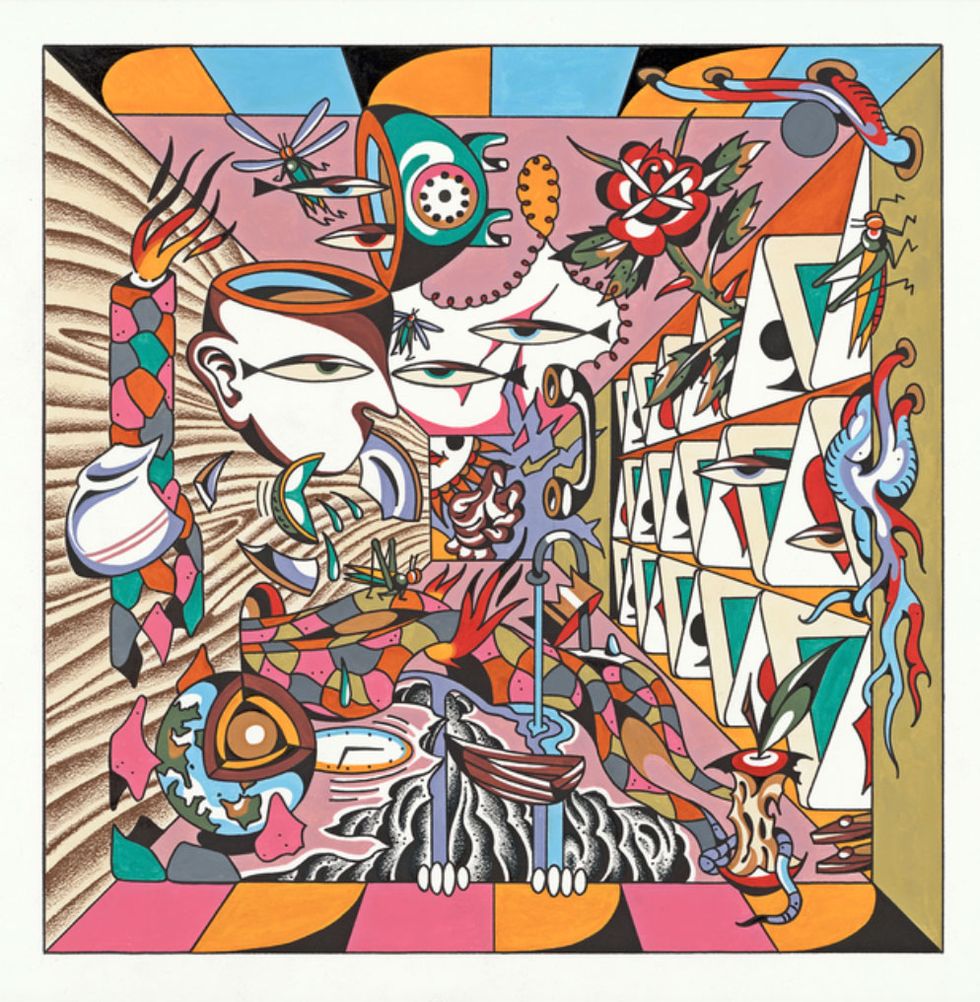
TIDBIT: Home marks the second time Billy and his band worked with producer/engineer Glenn Brown. “He’s 110 percent in it, and he’s 120 percent on your side,” says Strings. “If it’s rocking, you can see him in the control room, on the edge of his seat, yelling ‘fuck yeah, man!’—he’s the best cheerleader.”
So it’s other people putting the label on you.
Yeah, and as far as my music goes, I try not to corner myself with one style. I’m just trying to write a song, and whether it comes out as a rock song, a folk song, or a blues song, I’m just looking to write a good song. I take great pride in knowing that no matter how crazy, psychedelic, loud, and however many pedals I plug into, at the root of it, I’m still someone who studied Doc Watson. It’s there, no matter how you color it or warp it.
Your new album is called Home, as is the title track. What does “home” mean to you?
Sometimes I think my home is the highway—night to night, town to town, playing shows with my band in sticky, smelly clubs and traveling the world with my girl, Ally. And the most literal sense, home, being the place you never see as a touring musician, when the tour ends, home, sounds fucking unbelievable.
When I wrote that song, I was imagining myself stuck in an isolated, frozen cabin in the woods where you can’t get the fire started because the wood is wet and frost is on the windowpanes. Complete despair. You see, earlier this year, I hit a personal roadblock with my mental health. So I made it a priority to get a better control of that and know my limitations. Self-reflection and self-care has allowed me to appreciate that in my 26th year on this planet, my band is doing well and I’m able to pay my bills playing music. This journey of introspection has been really beneficial and has led me to being at home with who I am today.
Is it hard to adjust to being back home when you’re on the road so much?
There’s certainly an initial euphoria that comes from sleeping in my own bed, without bus call or checkout time. It’s very liberating. I love catching up on sleep the first few days, binge watching whatever I’ve been missing, ordering my favorite foods from my favorite places ... just being a normal American slob [laughs]. It’s great!
The road is so social. Whether it’s radio interviews, podcasts, pre-show chats, meet-and-greets, or post-show hangs, there are times where I feel like I’m giving myself away, and that goes back to the earlier point of my deteriorating mental health. I’m thankful my career is shaping up this way—I’m so grateful—but it can be draining.
But I also know if I’m home more than a week or 10 days, I start to get an itch, and I scratch that by doing musical things. I’ve also realized that finding hobbies outside of music is essential and rejuvenating. I just got this ’72 Chevelle that I’m pouring myself into.
What’s so special about that car?
My grandfather, my uncle, and my mother all loved Chevelles—that was our family love affair. My grandfather was a racecar driver and he had a couple Chevelles when I was growing up. I remember sitting in one of them all the time as a kid pretending to drive. When I was a teenager and I was making bad decisions and letting darkness creep in, my mom had a four-door ’72 Chevelle I used steal and cruise around the backwoods in it. It’s just a very nostalgic thing. So, now that I actually got my own, that’s symbolic to my growth and forging my own path as a man with my music. That car has brought me a lot of pride and happiness. If you see me riding around Nashville, I’ll be smiling ear to ear [laughs].
Strings was one of the marquee acts at 2019’s AmericanaFest, held in Nashville. Here he’s playing his Preston Thompson rosewood-body dreadnought. “For the live shows where I’m plugged in and going both direct and through my Deluxe Reverb, I really like the bass response, deep sound, and clear midrange of Brazilian rosewood,” he says. Photo by Chris Kies
Another important thing from your childhood is your dad’s Martin. Tell us about that.
When I was 10 or 11, money got really tough for the family. We lost our power and hot water, and paying bills was a real struggle, and the only thing left in the house worth anything was that D-93. So, my dad decided to take the guitar back to Elderly so we could eat and turn the utilities back on. I wanted the guitar to stay in the family longer than he or I would be around. The day he sold it was a tragedy at our home.
Years went by and even though I had no cash, I started looking around on the internet for an acoustic to pick with my dad again. I was window-shopping on this unofficial Martin forum and I saw my dad’s guitar! My jaw hit the floor. It had my dad’s wear down by the pickguard, the exact wear on the fretboard—I knew those markings like a roadmap of my childhood.
I sent its current owners, Joe and Marla Singleton—bless their hearts—a really long email. As I was writing it, I was crying on the keyboard. I pleaded to Joe not to sell the guitar to anybody but me because it was my dad’s guitar, and we sold it out of hardship seven or eight years ago. He responded that he had three interested buyers on eBay, and he was skeptical that I wasn’t just some punk 17-year-old talking shit on the internet. Thankfully, his wife Marla stepped in and said, “If this kid is telling the truth, you gotta give him a shot.” He relented and we agreed on $700 for three consecutive months.
I was living in Michigan, so I was taking back beer cans and pop bottles for 10 cents. I was selling weed, I was cutting grass—I did anything I could to make money. I took the original case to my parents’ house and set it on the table. My dad thought it was a prank—he told me “to get that fucking thing out of the house.” He eventually worked up the nerve to pull the guitar out and he started playing “John Deere Tractor” by Larry Sparks. His mom loved that song. My mom, my brother, and I all cried our eyes out while he played it. It was really special—that was one of the greatest things I’ve ever done.
Describe the creative process behind Home.
I got to cowrite in Nashville with a lot of friends, including Aaron Allen, Lindsay Lou, Jon Weisberger, and Ronnie McCoury. I collect songs, just like stamps in a passport, and eventually get enough ideas to work with.
I got the band together a few days before tracking in the studio and we really nailed down the songs. Our producer Glenn Brown was there, so once the band learned each song, we started arranging it. A method that works for us is to get a grasp of a song, know our individual parts, track it live, listen to it with Glenn, strip away what sucks, and get the best song that clearly portrays the emotion of the message and story.
The title track turned into a monster! We started tracking it as a solo performance of me and my droning guitar. It’s funny how that happens. I’ll write the song and have one idea of the emotion it portrays, but when I played “Home” for Glenn, he said he heard a Middle Eastern, Indian undercurrent. I was imaging more of a Punch Brothers’ vibe, but Glenn is so energetic and excitable, and he really wanted to experiment, so we added the orchestral strings and tabla percussion. Glenn always blows my mind with his vision, and that’s why we’ve worked with him on both records. So we got the strings and tablas in there, and the song gets rocking. I had just gotten back the prison guitar and had been looking for a spot to put it, so at this point with the strings in place on the track, I knew “33” had to shred all over that [laughs].
The prison guitar?
Well, my grandpa literally built it in prison. He was incarcerated from 1960 to 1962 at the Michigan State Penitentiary. He was a nonviolent offender, so he had access to the woodshop and he came out of there with this electric guitar he’d built. He made it out of a cedar table [laughs]. The tabletop became the body and a leg became the neck with a Gibson acoustic fretboard. It might’ve been a functional guitar at some point, but it didn’t have a truss rod, so when he put steel strings on it, the neck bowed and that was it.
I first saw it when I was five or six, snooping around my grandma’s closet. A few years ago I remembered it, so I called my mom and she told me my uncle Bill had the guitar. It was in pieces, so we had to do a complete restoration. Dave Johnson, who works at Carter Vintage and has his own brand, Scale Model Guitars, did the work. (Read about the restoration process done by Dave Johnson who now owns and operates Scale Model Guitars in Nashville.)
Two Preston Thompson dreadnoughts—one with a mahogany body and the other with a Brazilian rosewood body—appear a lot with you onstage and in the studio.
The mahogany dreadnought is great for an acoustic jam where I’m picking with a group of buddies. It tracks really well into condenser microphones, too—it just cuts. But for the live shows where I’m plugged in and going both direct and through my Deluxe Reverb, I really like the bass response, deep sound, and clear midrange of Brazilian rosewood.

Guitars
Preston Thompson dreadnought with mahogany back and sides
Preston Thompson dreadnought with Brazilian rosewood back and sides
“33”—aka “the Prison guitar” (originally built in the early ’60s by Strings’ grandfather while he was incarcerated, and restored by Scale Model Guitars’ Dave Johnson)
Amps
Fender ’68 Custom Deluxe Reverb
Effects
Chase Bliss Wombtone MkII
Chase Bliss Brothers
Source Audio Nemesis Delay
Eventide H9
Strymon Lex
Electro-Harmonix Micro POG
Electro-Harmonix Freeze
Electro-Harmonix Pitch Fork
Grace Design BiX DI
Boss GE-7 Equalizer
DigiTech Polara
D’Addario Planet Waves Chromatic Tuner
Whirlwind Micmute PP
Dunlop Volume (X) DVP3 Pedal
Ernie Ball Volume Pedal
Boss ES-8 Switching System
Strings and Picks
D’Addario Phosphor Bronze Mediums (.013–.056)
BlueChip TD55 picks
Did you take your live rig into the studio?
This time I made a point of bringing in my stage setup. When we record the song as a live band in the room, Glenn wanted me to be comfortable enough to reach for something extra in a moment of improvisation, and using my live setup was the best way to get there. The whole band records at the same time. We go through a few takes and listen back for the best one—not the perfect one, but the one that captures the moment, the emotion. We’ll do overdubs, harmonies, and layer something if it’s needed, but what you hear on the record is generally the band in one take.
With that much left up to chance, is there a standout moment where the band catches lightning in the bottle?
I’d probably say the “Away from the Mire” solo section. That was all improvisational and happened unannounced. It’s like we were onstage, just guessing [laughs]. The song was pretty much mapped out how you hear it on the record, aside from that big interlude part. After a few takes, I sensed something was missing. Not to always assert myself as the solution, but I had this feeling it needed a big jam section that culminates with an epic guitar solo. The guitar solo is just something I’ve always been drawn to as a listener—that’s why the ’70s will always have a special place in my heart [laughs].
There’s some raunchy, electrified elements in that solo, too. Is that “33” again?
The solo on “Away from the Mire” is just my Thompson Brazilian rosewood dread going direct and also blended with a distorted signal that’s a Chase Bliss Brothers into the Deluxe Reverb.
What’s your favorite pedal to use with your acoustic?
I like to make things real weird and stay away from subtle, so I’d say my Chase Bliss Wombtone phaser. Its tone sounds like a Leslie being played right outside a womb [laughs]. With its DIP switches, I can manipulate the rate, or any parameter, with an expression pedal. That lets me slowly ramp things up or down as I go in and out of solos. Plus, I really enjoy playing my acoustic through a tube amp for some distortion. It can get gnarly!
Onstage, I like using the EHX Micro POG to create an atmospheric bed—a single drone that’s held by the Freeze—and then I’ll riff over that as I lead into or out of a song. I look at pedals not as crutches, but creative, inspiring tools.
How did “Highway Hypnosis” come about? Especially when the jam interlude jumps right back into the chorus.
The idea of the song came from me and Ronnie McCoury talking about driving too long, when you feel like you’re hallucinating from staring at the road. I told him about this time one time I was behind the wheel and I had a dream I was at my grandma’s house, and she yelled, “Wake up!” I just snapped out of it and realized I was driving! That’s why I wrote the lyric, “Angels they watch over me, they keep me from disaster.” We wanted the interlude with the passing car sounds, train-station intercom, and background noise to lull you into a daze, and then bring the chorus back around like a lightning bolt of reality.
What was it like to get Jerry Douglas to play on two songs?
It was just an absolute honor to get Jerry on Home, but he’s such a down-to-earth guy that I don’t get overwhelmed or hung up on his long list of awards or accomplishments. Whenever I get together with anyone like Béla [Fleck], Jerry, Bryan [Sutton], it’s just so easy and fun. We all have such a reverence for the music and its history that we just geek out and have a blast.
How does that interplay work? Jerry is such a pro, what sort of direction do you give him?
We brought him in, explained the general shape of “Everything’s the Same,” and he just jumped right in, like a regular bandmember. After recording “Everything’s the Same,” we were all eating lunch and I said, “Hey Jerry, grab your guitar real quick, I got this other song I want to show you.” And so I played “Love Like Me” for him, and the second time through he joined me and it sounded so beautiful we just did the song as a duo.
As a reward for his road-dog success, Strings bought himself this ’72 Chevelle. It’s the same year as his mom’s old ride—a car that reignited his flame for bluegrass music, thanks to a Ralph Stanley cassette he found in the player.
On “Guitar Peace,”you unleash your 6-string firepower.
The night before we recorded it I was watching this George Harrison documentary that featured Ravi Shankar, and they were both talking about how music is spiritual and you just reach inside yourself and go for it. So the next day at the studio, everyone else was on a dinner break, I got super high and me and Glenn were like, “Let’s do something really weird.” He had his harmonium and I grabbed a guitar and just played. It didn’t need to be a song, it didn’t need to have a verse or chorus ... how about a little guitar piece?
In the creative growth from Turmoil and Tinfoil to Home, what are you most proud of?
I’d probably say my songwriting. “Enough to Leave” is a great example. It’s a direct letter to two longtime childhood friends who died last year overdosing on fentanyl and heroin. I was just so sad and devastated, and I wrote that song basically as a direct cry to them. Through the process of writing and then recording it, it really gave me some closure and ability to move on. I showed that song to a friend and it hit her hard. She thought of it as a breakup or relationship song, so that’s another beautiful thing with music. It really allows the listener to make any song, no matter its author’s intention, personal to them and their path.
What’s something you’re actively working on as a guitarist?
My playing technique and dynamics. I’ve always played aggressively with thick strings [.013–.056] and high action—it’s my thing, it works for me. But when I get around someone like Bryan Sutton, whose right hand is just so fluid and economical, it makes me reassess how much energy I hit the strings with. And on top of that, because he hits every string with the perfect amount of pressure, he sounds louder than I do, so attack and power don’t translate to volume and projection. You’d think, more volume, play harder, but no, play cleaner.
Going forward, do you see yourself playing more electric live or in the studio?
I’d really like to, man. I’d love to do a rock ’n’ roll band tour. I also have this crazy fantasy where it’s me, my bass player Royal Masat, Leftover Salmon drummer Alwyn Robinson, and keyboard player Erik Deutsch, and maybe Lettuce guitarist Eric Krasno, and we all start a jam band.
With eyes the size of saucers, Billy Strings and his band tear through a somber tale of seeing a friend become a shell of themselves in the grip of addiction. Zip ahead to 3:13 to see the guitar wiz infuse his nuclear death-metal energy with blazin’ flatpicking during this Music City Roots performance.
The Opry has been home to many legendary storytellers and hot pickers, but we’re guessing no one has sung a tune about meth there before. To see why Apostol goes by “Strings,” dial up 2:08 and hang on.
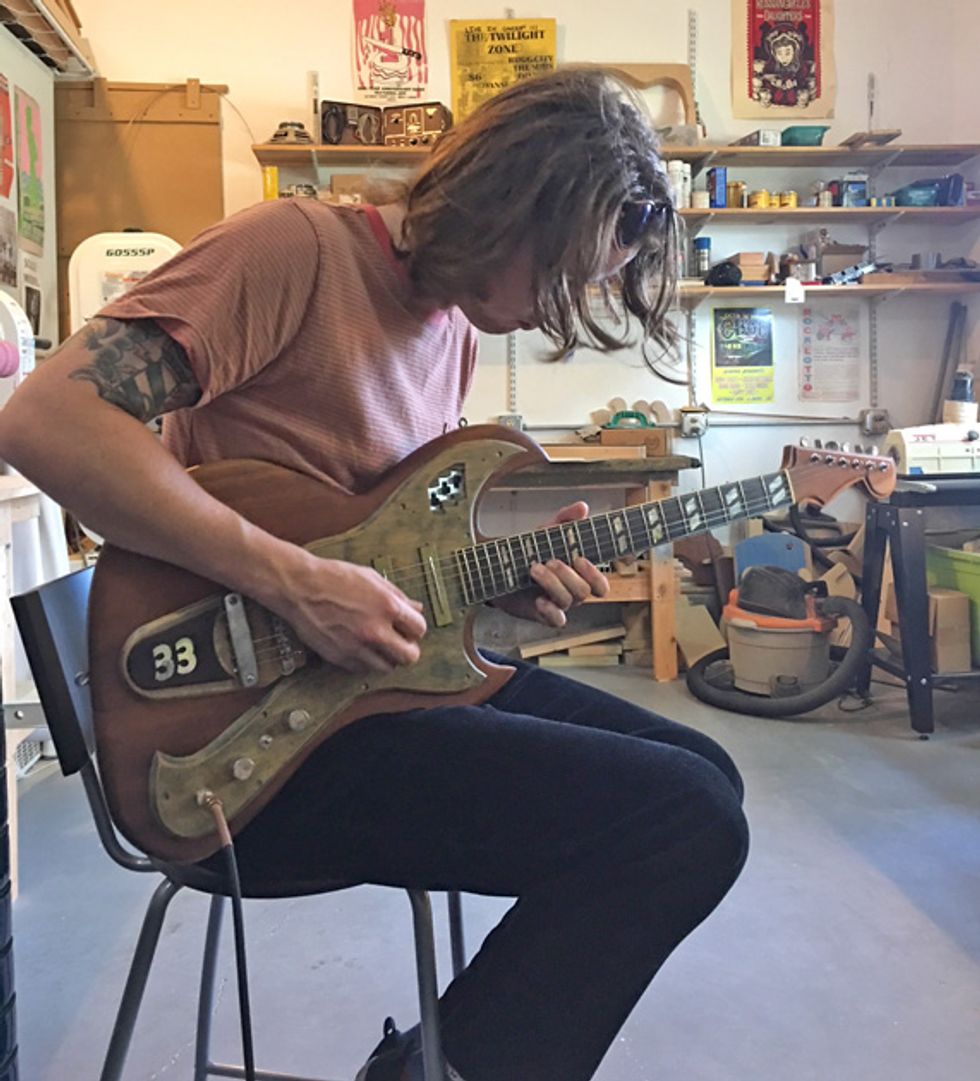
Resurrecting the Prison Guitar
We spoke with Dave Johnson, former Carter Vintage Guitars’ repairman and head lutherie behind Scale Model Guitars, about the process of rebuilding the guitar Billy’s grandfather constructed while incarcerated during the early ’60s in Michigan.What sort of shape did you receive the guitar? And what building orders did Billy give you?
I think that Billy just wanted to make it functional again so he could play it. The guitar had been stored away for a long time and it definitely had sentimental value. It had serious mojo, so there was no question that we had to make this thing play again!
When I first took possession of the guitar, it had a neck-body husk and a handmade pickguard. There was no hardware, but you could see that the guitar did have strings, tuners, and electronics on it at some point. There were screw holes from tuners in the headstock, threaded holes where the bridge posts once were, and the pickguard was routed and drilled for electronics and mounting screws. (Check out Dave’s Instagram account @scalemodelguitars to relive the entire restoration process that starts on July 2, 2018.)
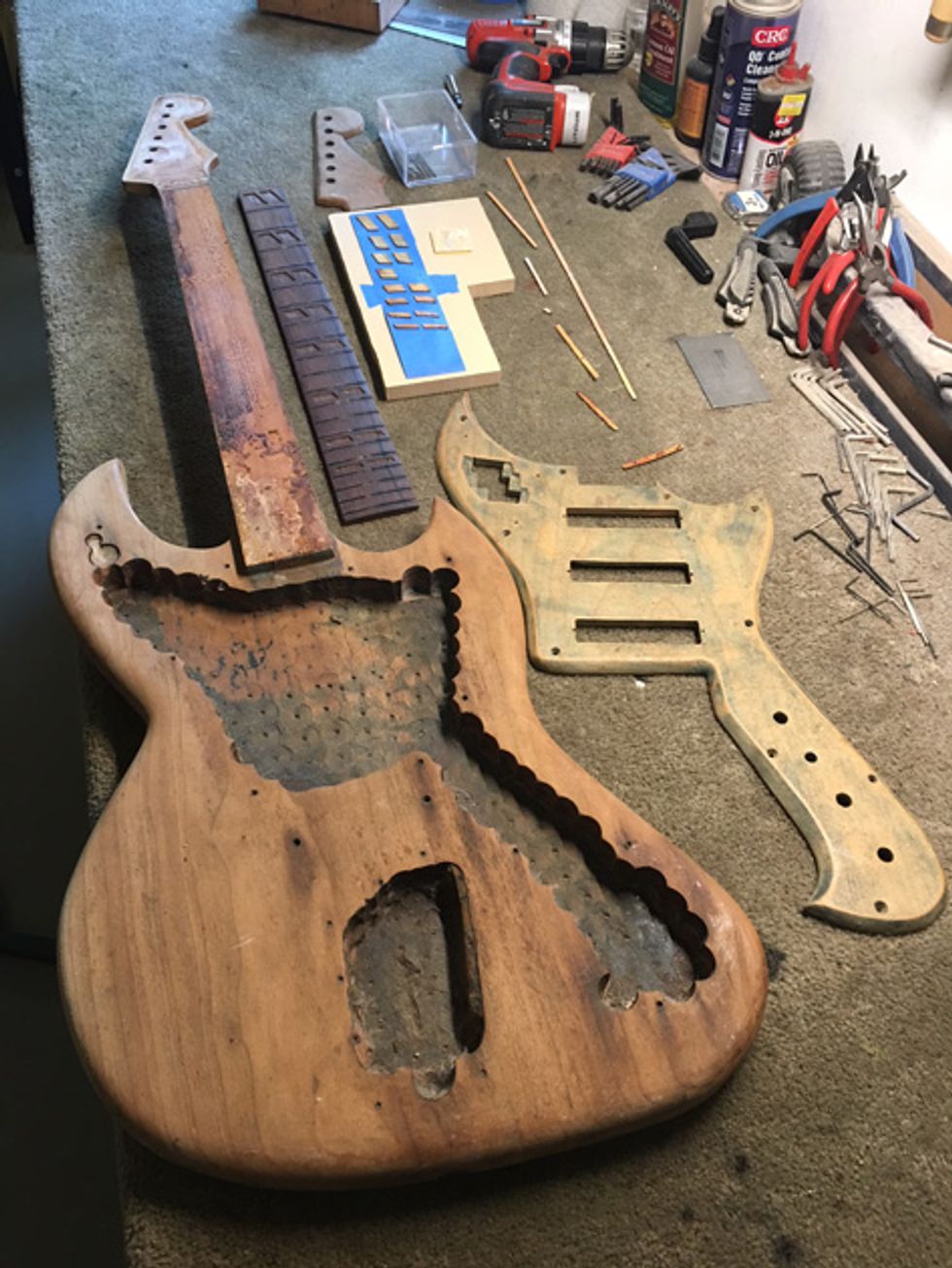
What were some of the more difficult or delicate tasks you conducted on the guitar?
The biggest issue with the project was the use of cedar as the neck. Cedar actually does sound great as a tonewood, it is known for its warmth. (Acoustic guitar makers will sometimes use it in place of spruce for soundboard tops, and classical guitars will commonly have cedar necks.) However, steel-string guitars carry much higher string tension and will typically need to have a denser wood material for the neck (like maple or mahogany). The guitar didn't have any kind of truss rod or metal support down the neck, which I discovered after removing the fretboard at the beginning of the restoration. Also, the headstock was made very thin—just over 1/4" of thickness—and had almost no pitch angle. My guess is that the guitar neck probably bowed excessively once it was strung up (with steel strings). It’s definitely a good thing that it was stored away without strings because the tension would have warped the neck for sure.
Now to its advantage, the fretboard was off of a Gibson Jumbo guitar (it is Brazilian rosewood and has the classic celluloid split parallelogram inlays), however I’m not sure how this fretboard came to be in his possession, at a prison. I quickly realized that the neck simply needed to be stronger. I approached this concern by insetting a maple spine down the length of the neck (measuring around 3/4" wide) and then anchored an adjustable truss rod inside the spine (you wouldn't want to anchor a truss rod directly to cedar—it wouldn’t last very long). Then I ran the spine through the end of the neck into the tilt-back of the headstock and then veneered the back of the headstock with more maple, to get the headstock thickness to a more workable size of 9/16", and then doweled the two maple pieces together. I also ran two carbon-fiber rods along the length of the neck tapers at the sides and then glued the fretboard back onto the neck hiding all of these additions. (I basically built a suspension bridge inside this neck.) To Bill Lee's credit, he shaped a great neck profile on this guitar. It is thick but very comfortable, a soft V in the first position to a nice round C at the end. It’s a very fun neck to play.
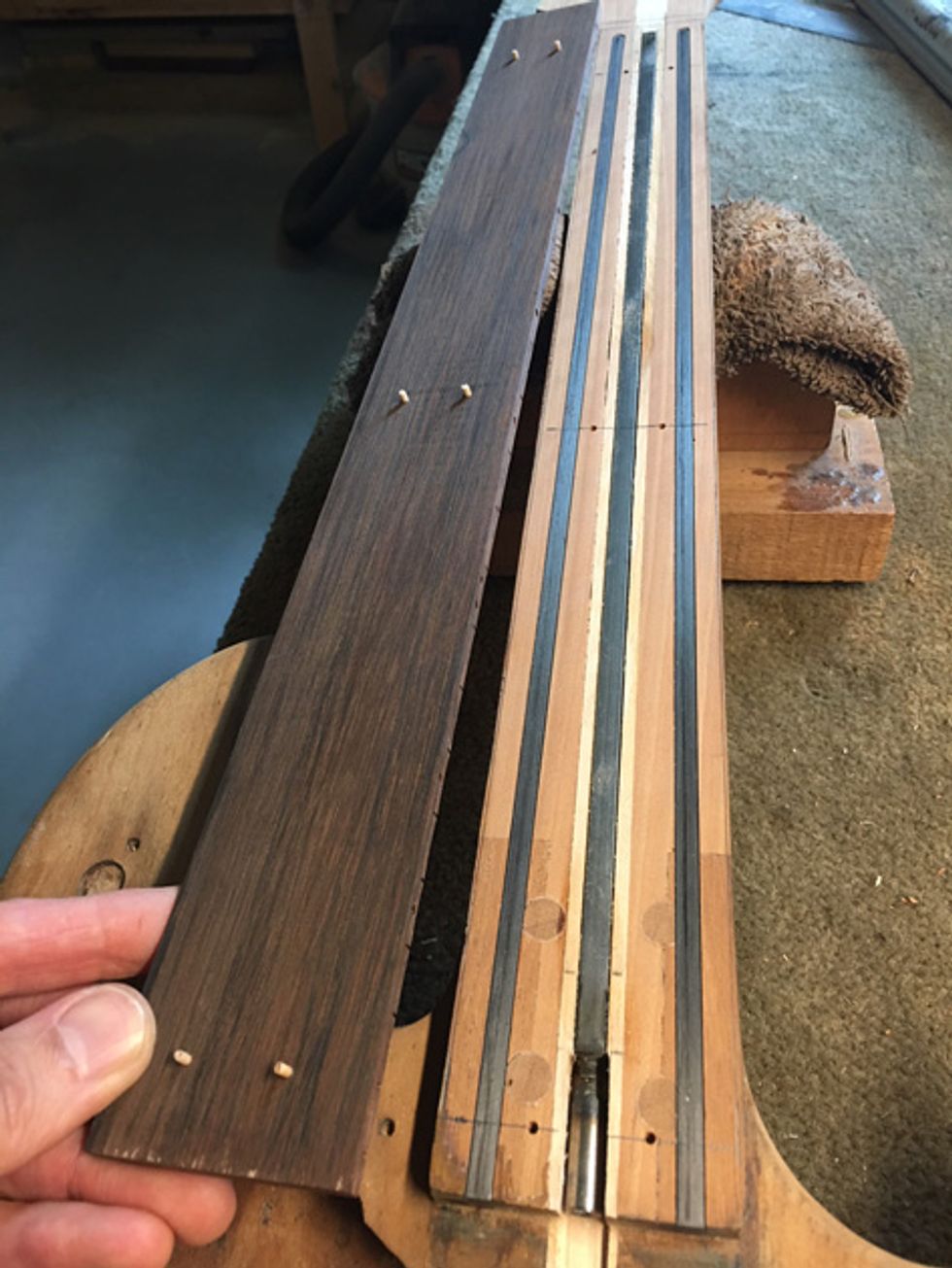
Did you have to carve out any of the body to get the pickups/wiring to fit? Was the pickguard something you added or was it on the guitar already?
I actually didn't have to, the electronics cavity in the body had plenty of depth. I did make a cage out of aluminum which attached to the underside of the pickguard holding the pickups and switches in place. The pots and output jack fit directly to the guard. The pickguard was already made by Billy's grandpa and we just figured out how to make it work so it didn't need to be altered.
One interesting thing to note on the pickguard—I did notice that it has traces of blue, possibly because it was stained blue at one time. This guitar was made in prison, and I always wondered if Bill Lee might have used bluing agent to stain the pickguard (that is what they used in prison as laundry detergent). It would totally make sense if this were the case!
What pickups are now in it? What style of voicing?
My buddy Steve Mather (who is currently working at Fender Custom Shop) made the pickups for this guitar, and they sound incredible! The tricky thing about the pickup cavities in the pickguard was that they were not cut evenly to allow the placements to cover the string paths. Basically, the 1st string would be inside the field of the magnet on two of the pickups but not on the middle one because the cutout wasn't on center. Steve got around this issue by going for Charlie Christian-styled bobbins with blade magnets and then was able to offset the cutouts in the flatwork to be on the center line. This was a big deal because I really didn't want to modify any of Bill Lee's work. The rule of the whole project was that his visible work had to remain intact, and that included the pickguard.
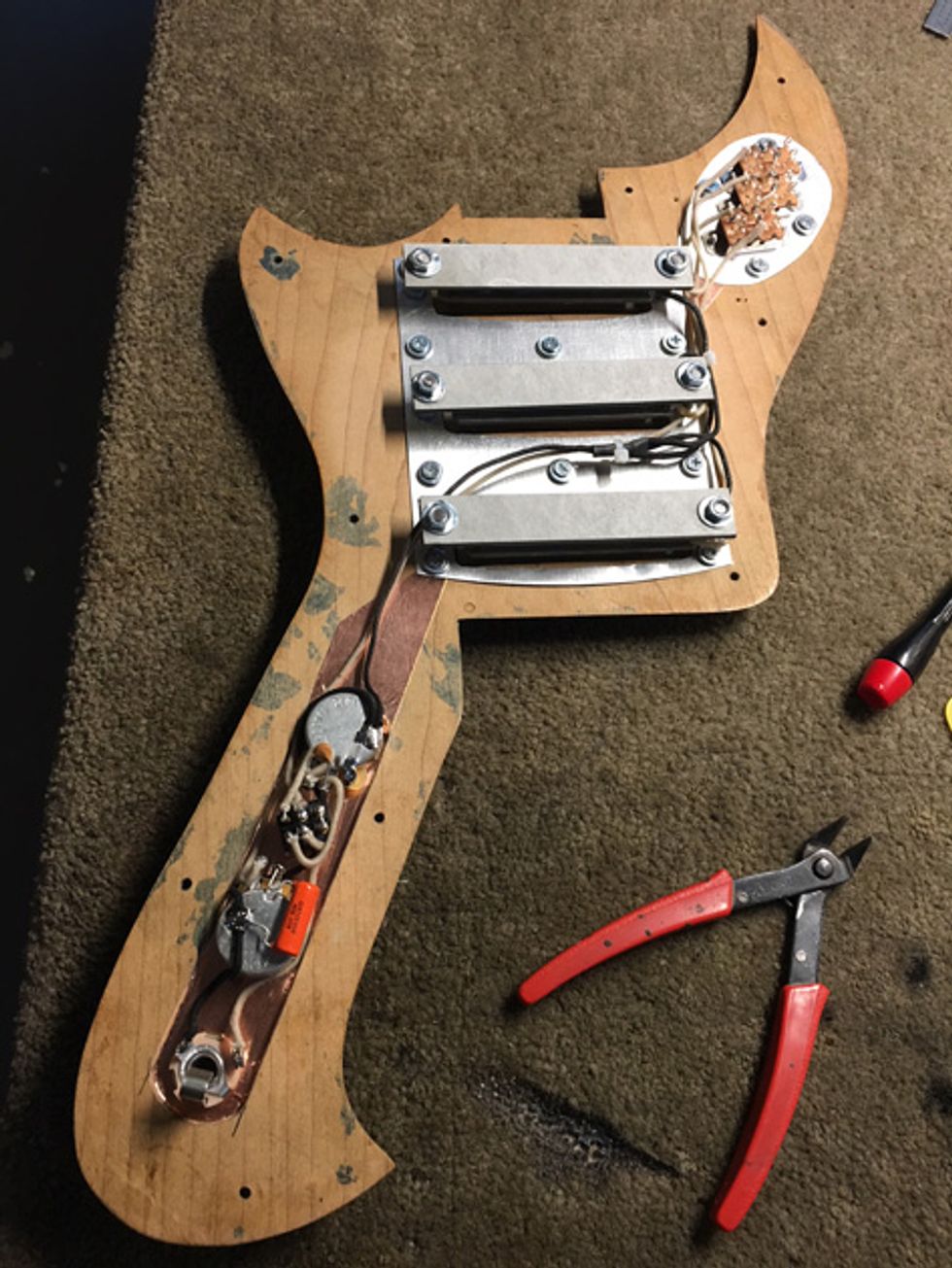
Steve wound the pickups around the 7k range—increasing from neck to bridge. He also did a little relic work with amber-tinted lacquer, so they aesthetically fit the guitar. I was able to install three on-off switches (one for each pickup), master volume, master tone, and also added a blower switch that bypasses the potentiometer resistance and sends the pickups straight to output jack for a slight signal boost.
Can you clarify or validate if the guitar really was made from a table? Do you know the actual woods used for body/neck/fretboard?
The body and neck were made from cedar, and the fretboard is Brazilian rosewood (it is definitely off of a Gibson Jumbo acoustic, like an SJ or Country Western). I can't say for sure if it was actually made from a table or not, but there are some pretty obvious giveaways: There appears to be tongue-and-groove joints in the neck, which are really more of a furniture-jointing technique that you might find on table legs. Also, the body is not a single, solid piece of wood, but rather two or three pieces of cedar joined together. The joints on the body are very clean and seamless, like on a production-made cutting board or a tabletop. The only way to make body joints like that are with the use of a jointer and planer.
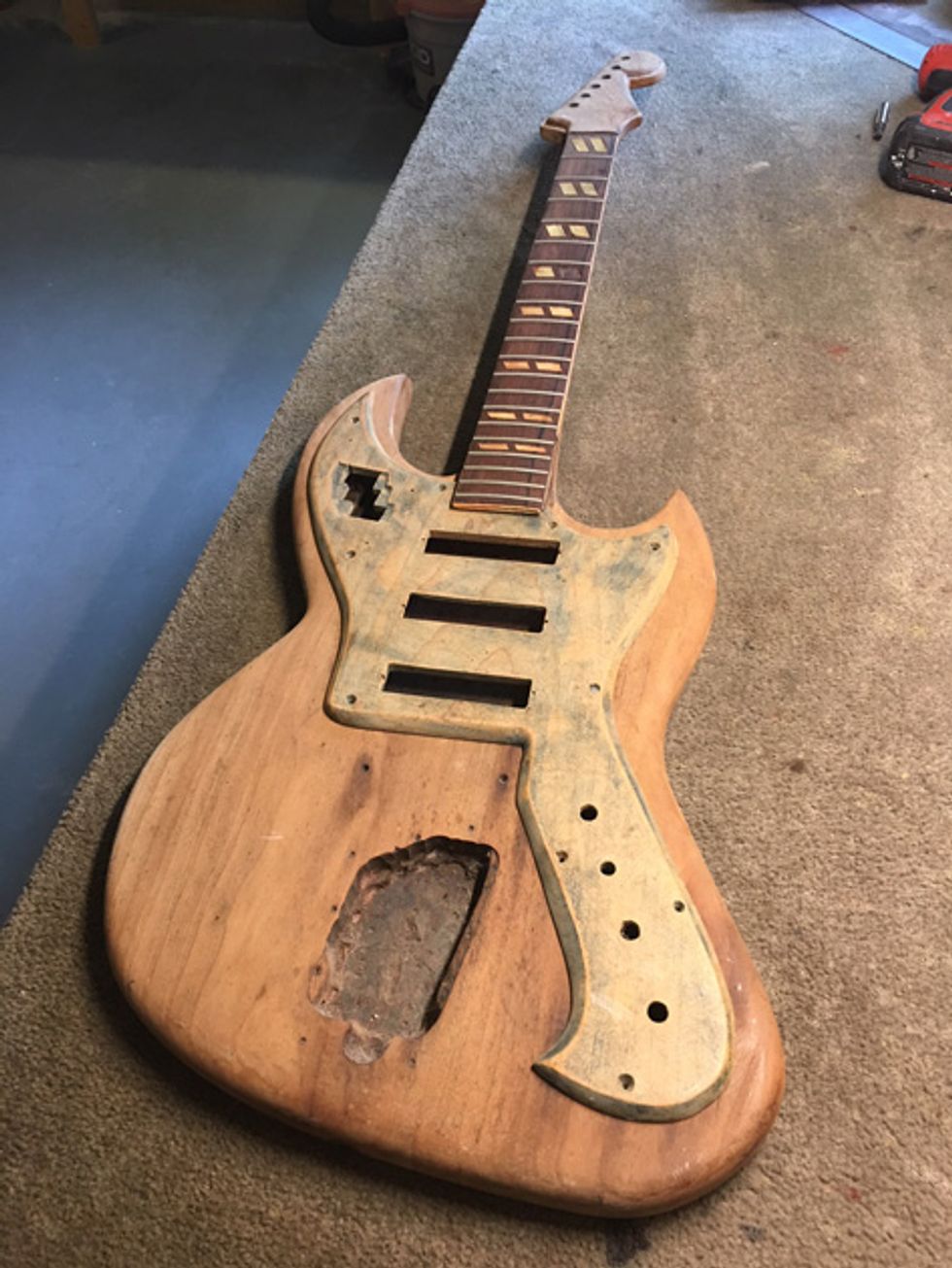
If Bill Lee had access to tools like that in prison, then it is absolutely possible that he scratch-built this guitar. I think it is way more likely that he repurposed a piece of furniture, but I guess we will never know for sure.
What was your overall impression of the guitar considering it was built by a man in prison with no or limited woodworking/guitar-building background?
I think it’s seriously incredible that he was able to make this guitar and take it as far as he did with limited access to tools and little to no guitar-building experience. He missed on things that you would expect him to miss on—like an accurate center line and intonation point. These things are fixable though … everything is fixable. He hit a grand slam on the design and that is way more difficult to do! You have to admit that this is a very unique design, it's like a mashup of a Fender offset and an SG. That headstock design is scary good! It’s such an incredible-looking guitar and it’s truly one-of-a-kind.
If I were only to build one guitar in my whole career, I would hope that it would turn out as nice as Bill Lee's. The best part about this entire project though, is the fact that this guitar (which was essentially a time capsule) will now have a second life to make music. I can only imagine the songs that Billy will write with it. You couldn't ask for a better gift than that!



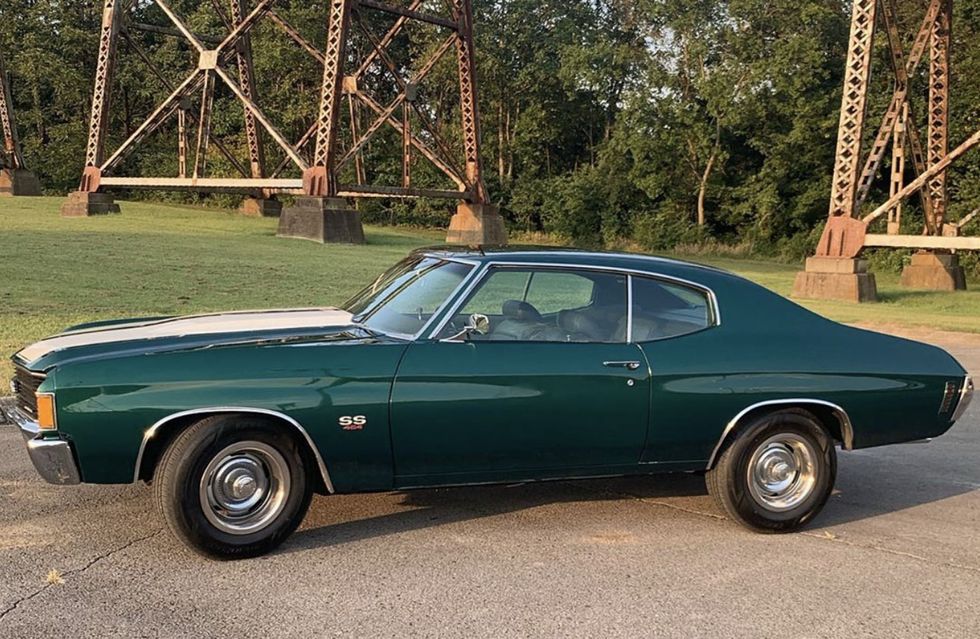
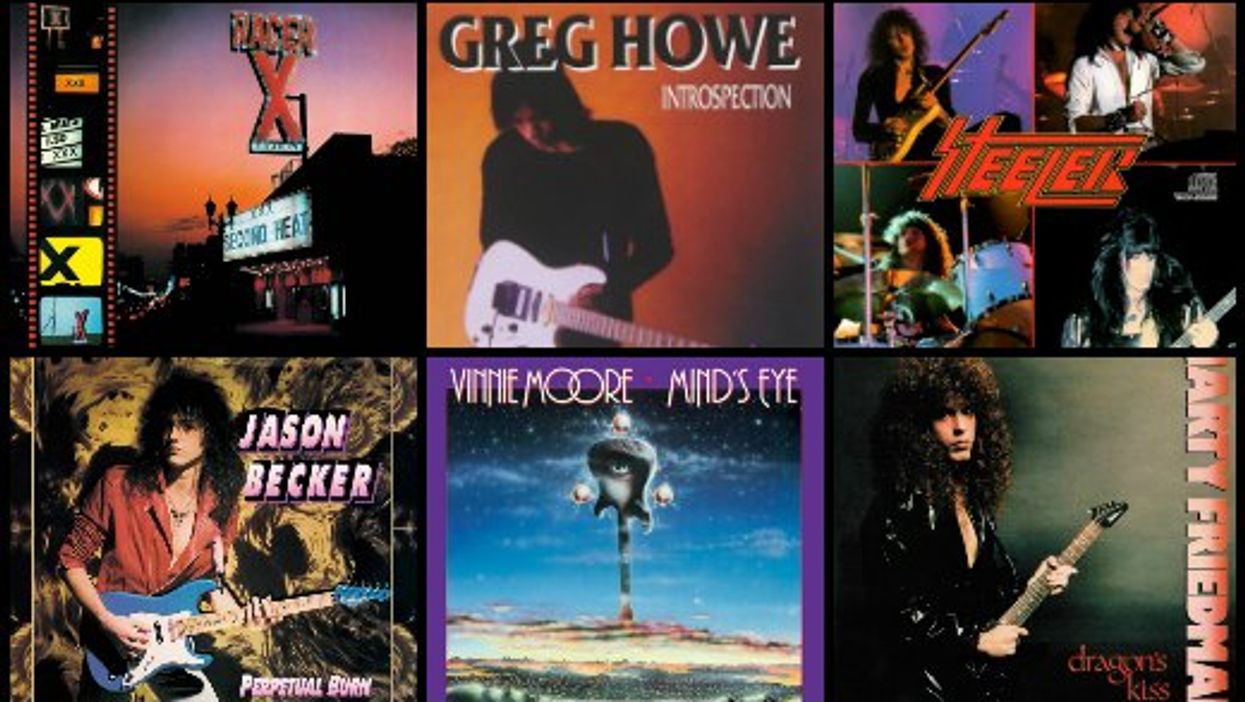
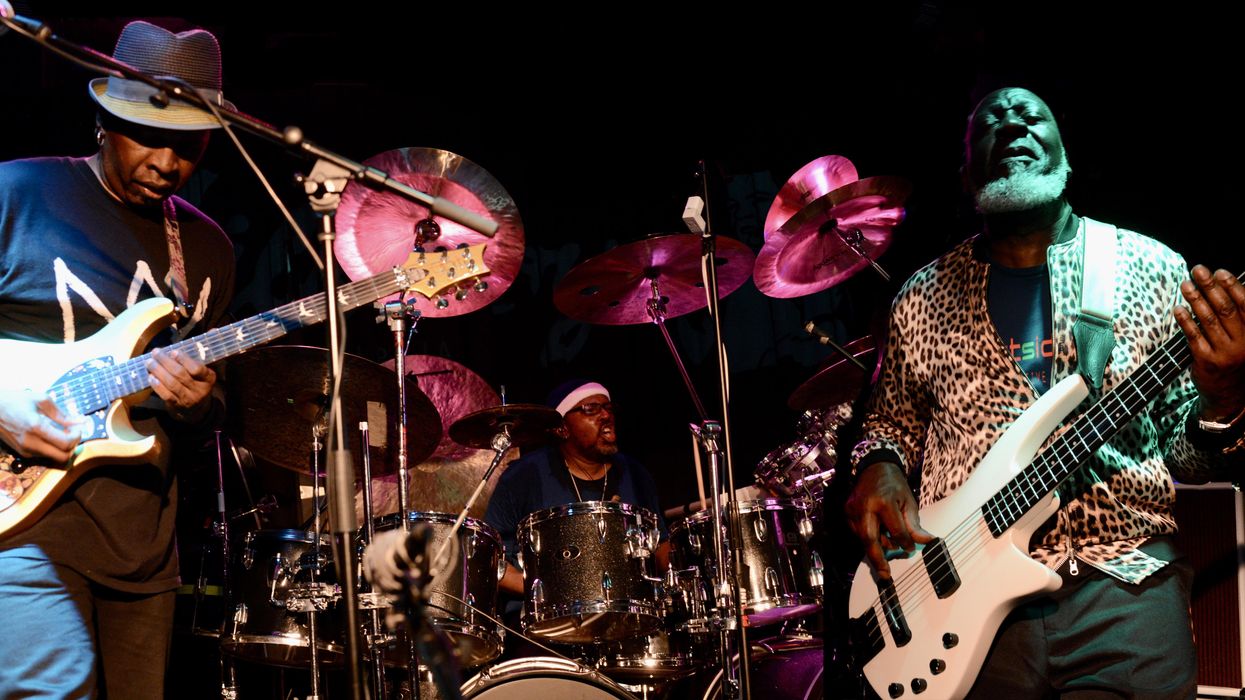


![Rig Rundown: AFI [2025]](https://www.premierguitar.com/media-library/youtube.jpg?id=62064741&width=1245&height=700&quality=70&coordinates=0%2C0%2C0%2C0)












 Shop Scott's Rig
Shop Scott's Rig
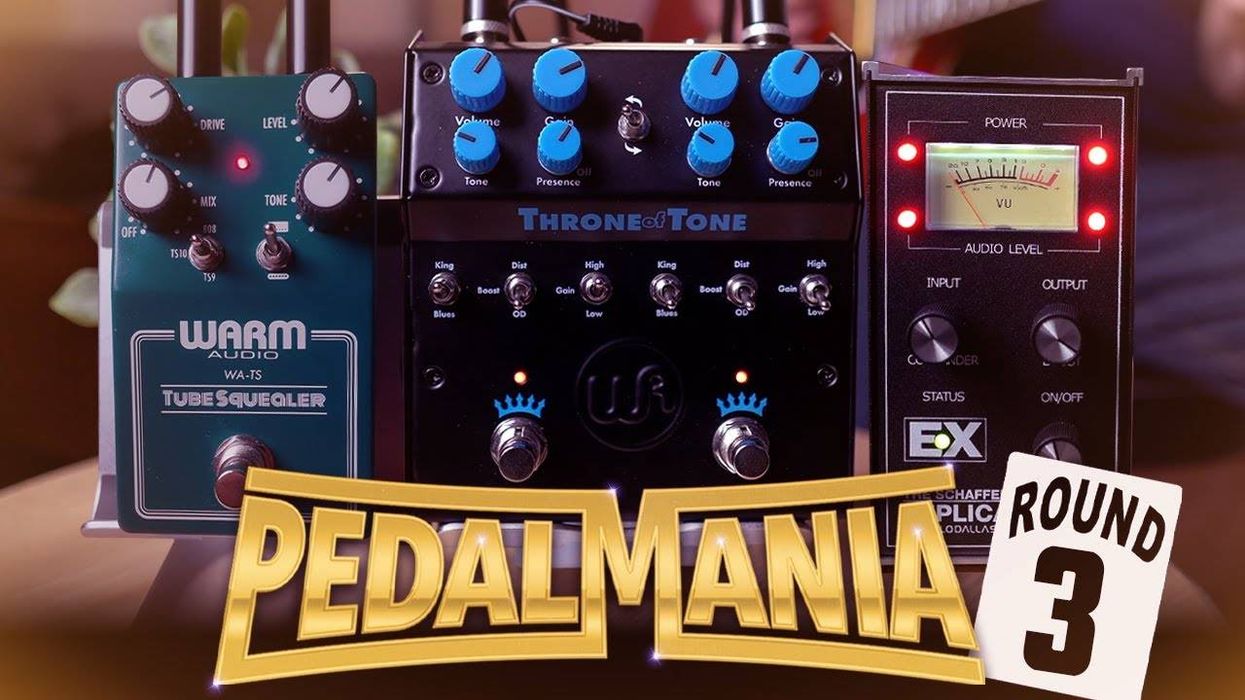












 Zach loves his Sovtek Mig 60 head, which he plays through a cab he built himself at a pipe-organ shop in Denver. Every glue joint is lined with thin leather for maximum air tightness, and it’s stocked with Celestion G12M Greenback speakers.
Zach loves his Sovtek Mig 60 head, which he plays through a cab he built himself at a pipe-organ shop in Denver. Every glue joint is lined with thin leather for maximum air tightness, and it’s stocked with Celestion G12M Greenback speakers.












![Devon Eisenbarger [Katy Perry] Rig Rundown](https://www.premierguitar.com/media-library/youtube.jpg?id=61774583&width=1245&height=700&quality=70&coordinates=0%2C0%2C0%2C0)






